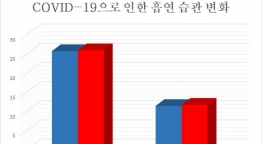황영원(고려대학교 한국사학과 박사수료)
This is an Open Access article distributed under the terms of the Creative Commons Attribution Non-Commercial License (http://creativecommons.org/licenses/by-nc/4.0/) which permits unrestricted noncommercial use, distribution, and reproduction in any medium, provided the original work is properly cited.Abstract
The modern education institutes play an important role in fostering professional talents, reproducing knowledge and studies, and forming the identities of certain academic fields and vocational communities. It is a matter of common knowledge that the absence of an official Korean medicine medical school during the Japanese colonial era was a severely disadvantageous factor in the aspects of academic progress, fostering follow-up personnel, and establishment of social capability. Therefore, the then Korean medicine circle put emphasis on inadequate official education institutes as the main factor behind oppression. Furthermore, as the measure to promote the continuance of Korean medicine, the circle regarded establishing civilian Korean medicine training schools as their long-cherished wish and strived to accomplish the mission even after liberation.
This study looked into how the Korean medicine circle during the Japanese colonial era utilized civilian training schools to conduct the Korean medicine education conforming to modern medical school and examined how the operation of these training schools influenced the changes in the traditional Korean medicine.
After the introduction of the Western medical science, the Korean medicine circle aimed to improve the quality of Korean medicine doctors by establishing modern Korean medicine medical schools. However, after the annexation of Korea and Japan, official Korean medicine medical schools were not established since policies were organized centered on the Western medical science. In this light, the Korean medicine circle strived to nurture the younger generation of Korean medicine by establishing and operating the civilian Korean medicine training schools after the annexation between Korea and Japan. The schools were limited in terms of scale and status but possessed the forms conforming to the modern medical schools in terms of education system. In other words, the civilian training schools not only adhered to the standard education of Korean medicine but also aimed to lay their foundation in the education system of the Western medical science by forming the separated curriculum including basic medical science, diagnosis, clinic, drug, and the practice of acupuncture and moxibustion. Furthermore, having contained the basic subjects of the Western medical science - physiology, anatomy, pathology, etc. - in the compulsory subjects shows perceiving the intellectual and systematic hegemony of the Western medical science and satisfying the demand of the colonial power. Such an education system was succeeded and solidified through the training sessions and the training schools operated by the local colonial governments after the 1930s. Korean medicine became different from the traditional Korean medicine through the establishment and the operation of such training schools.
색인어: 일제시기, 한의학, 교육, 의학교, 민간, 강습소, 한의학의 변화
Keywords: Japanese colonial era, Korean medicine, education, medical school, civilian, training school, changes in Korean medicine
1. 머리말
19세기 말 신·구문명의 대조 구도 속에서 서양의학이 본격적으로 유입됨에 따라 기존의 주된 의료 방식이었던 한의학은 점차 낙후되고 비과학적인 '초근목피(草根木皮)'로 격하되기 시작하였다[1]. 식민지시기에 들어서면서 일제는 자국의 경우와 마찬가지로 궁극적으로 한의학을 도태시키기 위한 정책적 규제를 강화하였다[2]. 이에 한의학은 일제의 정책적 지향으로 인해 더더욱 '근대사회'에 걸맞지 않고, 서양의학의 보급에 따라 자연스럽게 역사의 무대에서 빠져나가야 할 조선인의 관습과 전통으로, 그 사회적 이미지가 식민권력 및 서양의학 측에 의해 생산되었다[3]. 이처럼, 오랫동안 조선인의 의료생활에서 중요한 역할을 담당하였던 한의학은 불과 몇 십 년 만에 지적 헤게모니를 상실한 채, 불안정한 의료형태의 지위로 전락했다.
정책적 지원이 뒷받침되었던 서양의학과는 달리 일제가 정책적으로 한의학을 멸시·홀대하였음을 보여주는 구체적 예는 의사와 의생 면허 및 지위의 구별, 제한적 의생제도[4]를 통한 의생 인원수와 개업지역에 대한 규제, 의생들에게 서양의학 지식의 강제적 주입 및 공식적인 한의학 교육기관, 즉 의학교 설립에 대한 제한 등을 들 수 있다.
이 가운데 일제시기 한의학 의학교는 서양의학이 중심이 된 근대적 의학교가 여러 곳 설립된 것과는 달리 단 한 곳도 설립되지 못하였다. 교육사회학의 기능론적 교육관에서 볼 때 근대 교육기관은 전문화된 인재를 양성하고 지식, 학문의 재생산, 더 나아가 특정 학문·직업 공동체의 정체성 형성에 중요한 역할을 수행한다(권정숙 외, 2009: 139; 김병성, 2004: 53-54). 학교의 부재가 한의계에 있어 학문의 발전, 후속 인력의 양성, 그리고 사회적 역량을 구축하는 면에서 상당히 불리한 요인으로 작용한 것은 주지의 사실이다. 따라서 당시 한의계는 자신들의 주된 탄압 요인으로 공식 교육기관의 미비(未備)를 강조해 왔다. 아울러 한의학의 존속을 도모하기 위한 방편으로 민간 한의학 강습소의 설립을 숙원 사업으로 삼고, 이를 완수하기 위해 해방 이후까지 꾸준히 노력했다.
그러나 민간 한의학 강습소가 갖는 이와 같은 의미에도 불구하고, 그간 학계에서는 일제시기 공식 한의학 교육기관이 부재하였다는 인식에 익숙한 나머지, 민간 한의학 강습소를 체계적으로 조명하는 연구가 매우 빈약한 실정이다. 물론 일제시대 한의학의 역사를 통사적으로 다룬 이종형(1997)과 김기욱 등(2006)의 저술에서는 한의계의 내적 시각에서 당시 한의계의 학술 진흥 및 30년대 한의학 부흥운동의 일환으로 동제의학교, 공인의학강습소 및 경기도 의생강습소의 상황을 소개하였다. 하지만 이들 저술은 한의학 교육 자체에 주목한 것이 아니기 때문에 일제시기에 이루어진 한의학 교육의 전개 양상, 변화 및 그 특징을 조명하지 못하였다. 또한 30년대 이후 도(道) 식민당국에 의해 여러 의생강습소가 설립된 경위를 전시체제의 배경을 들어 간략하고 모호하게 서술하는 등 역사적 사실을 오해하게 만들 수 있는 여지를 남겨 두었다. 한편, 유일한 전문 연구로 볼 수 있는 기창덕(1992: 178-196)의 논문은 초창기의 연구로서 여러 의학강습소의 존재를 조명하였다는 점에서 가치가 있지만, 이 연구 역시 의학교육 자체에 천착하지 않았으며 또한 의생단체를 의학교육기관과 혼동하였다는 한계를 가진다.
일제시기 민간 강습소들이 규모나 체계에 있어 미비한 점이 많은 것은 사실이다. 그러나 당시 한의계는 이들 민간 강습소의 설립 및 운영을 통해 한의학의 학문 체제를 재확립하는 동시에 서양의학과의 관계를 설정함으로써 스스로의 정체성을 모색·구축하고 있었다. 교육이념이나 교과과정 등 내용면에서는 근대 교육, 특히 서양의학 교육의 영향을 많이 받았고, 1930년대 관변 의생 강습회나 강습소의 주된 기반이 되기도 하였으며, 나아가 오늘날 한의학 교육시스템의 원형을 형성하기에 이른 것이다. 식민지시기 한의학은 이러한 일련의 과정을 거치면서 전통 한의학과 다른 모습으로 변모하게 되었다. 특히 서양의학 지식을 수용한 것과 관련하여 신규환이 논한 바와 같이 한의계에게 서양의학 지식은 1910년대 총독부가 강요한 의료질서로 인해 '알아야만 하였던 것'이지만 1920, 30년대를 거치면서 '알고 싶은 것'과 '받아들이고 싶은 것'으로 인식이 전환되었다(신규환, 2007: 254). 이런 인식의 전환은 과연 한의학 교육에서 어떻게 구현되었는지 논증할 필요가 있다.
이에 본 논문에서는 일제시기 공식 한의학 교육기관의 부재라는 고정 관념에서 벗어나 실제로 일종의 준교육기관의 역할을 수행하였던 민간 한의학 강습소 및 이와 관련된 관변 의생강습소(회)의 설립 및 운영에 대해 구체적으로 고찰하고자 한다. 이를 통해 근대 한의학 교육 모델의 형성 과정 및 특징을 분석하고, 나아가 일제시기 한의학의 변모 및 학문적 정체성을 조명하는데 기여하고자 한다.
Copyright © 의약일보










